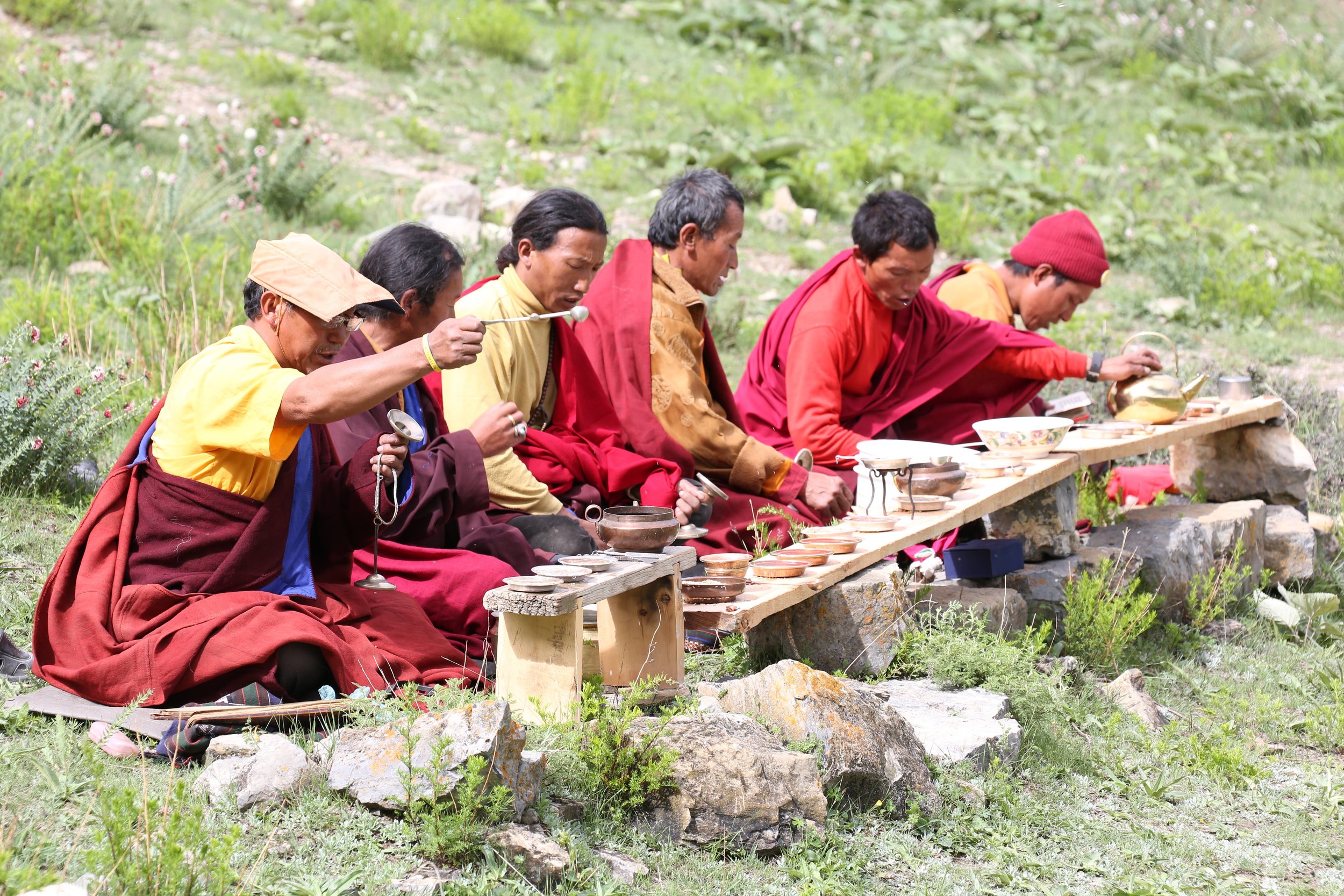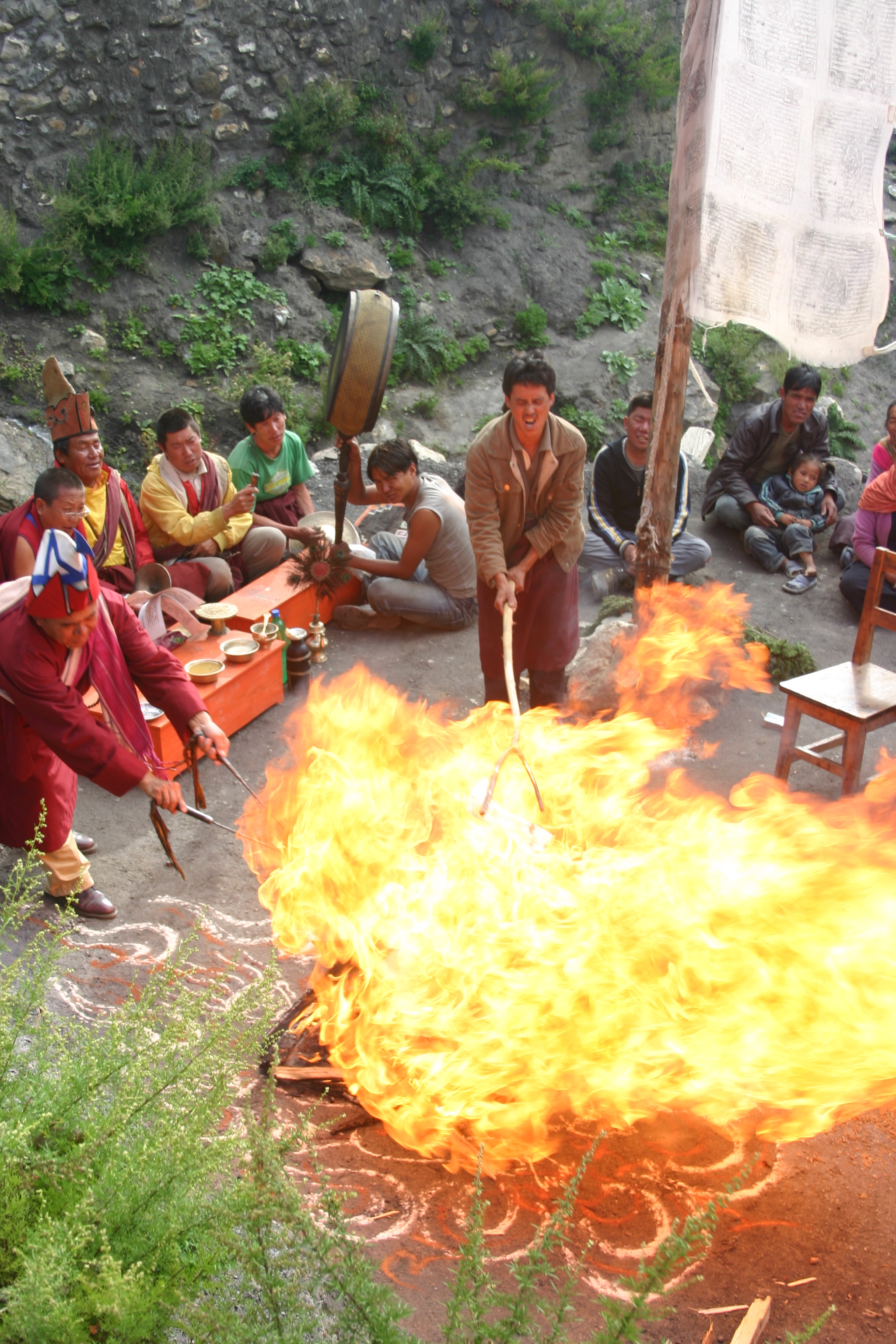Bon Rituals
A study of the Bön tradition
Propitiating the serpent-spirits (lu) to ensure timely rainfall (Samling, Dolpo) (1)
Until relatively recent times the Bon religion of Tibet was poorly understood by the majority of Tibetans and Westerners alike. Although our general knowledge has advanced greatly in the past few decades thanks to the work of a few pioneering scholars, misconceptions still abound, and many areas of this fascinating religion remain obscure. While most of the secondary literature on Bon has dealt with the history, philosophy and meditative systems of the religion, the domain of ritual is still substantially unexplored. Understandably, students of Bon ritual have tended to favour the literary component: after all, where the rituals in question are obsolete, this is the only option available to the researcher, except in the rather unusual cases where the surviving texts are supplemented with illustrations. But ritual, by definition, includes an important performative element. In addition to the various accoutrements and effigies that feature in any performance, there are gestures, processions and interactions that are generally described in only the vaguest terms in the liturgical sources, where they are mentioned at all. Some of the most interesting aspects of ritual performances have no place whatsoever in the sources. These would include a lama’s idiosyncratic interpretation of text prescriptions, his exchanges with the other participants (such as his assistant and his patrons), the occurrence of errors (an assistant pouring red dye onto an effigy shat should remain uncoloured), and solicited or spontaneous commentaries on procedures.
A fire offering to conclude a ceremony for the purification of the community (Lubrak, Mustang) (2)
The “Three-Headed Man of the Black Rituals,” an effigy in an exorcistic ritual (Lubrak, Mustang) (3)
If the text is just one – albeit an essential – component of a ritual, observing an actual performance can be a hopelessly confusing experience. Behind the noise, the chaotic activity and the protracted chanting it is often far from clear what is going on. One of the main purposes of this site is to render Bonpo rituals more accessible by combining the textual and performative dimensions. A detailed explanation of how this works is given [here], but the general idea can be explained in simple terms as follows:
* The site hosts several dozen Bonpo ritual texts. The texts are presented in facsimile form as well as romanised transliteration, and, in many cases, with a full English translation and notes.
* The performative aspect is represented by video recordings of a number of rituals, to which access can be had via links on the site’s pages. The videos are subtitled in English, and range in duration from approximately ten minutes to eight hours. Currently approximately 20 hours of English-subtitled video footage of Bonpo rituals are available online.
* Each ritual is also covered by an article that is divided into two main parts: 1. a general discussion of that category of rituals; and 2. a detailed description of a particular performance.
* The articles are illustrated with photographs, diagrams and tables, and contain numerous links. The links are of two kinds: 1. to texts; and 2. to video footage. The links will take the visitor to precisely that point in the text or the video that is relevant to the part of the performance that is being described. (It is also possible, of course, to see the texts or watch the videos in their entirety.)
* The transcriptions of the texts also contain links that will take the visitor to the point in the video where any given passage is being recited. This will make it possible to see exactly what is going on when the lama is reading that section of the text.
While this website is dedicated mainly to ritual it also offers resources that are relevant to other areas of the Bon religion. These resources include: paintings (tsaklis and thangkas); texts not directly connected to ritual (such as biographies and canonical works); Tibetan periodicals and other publications related to Bon; scholarly contributions to Bon studies in Tibetan and in European languages.
Making offerings in the Yangal family temple in Samling, Dolpo (4)




